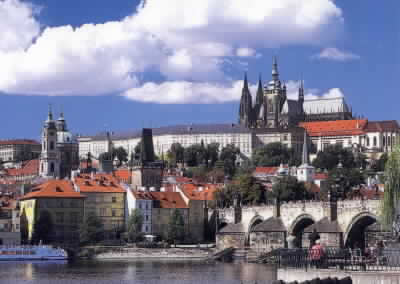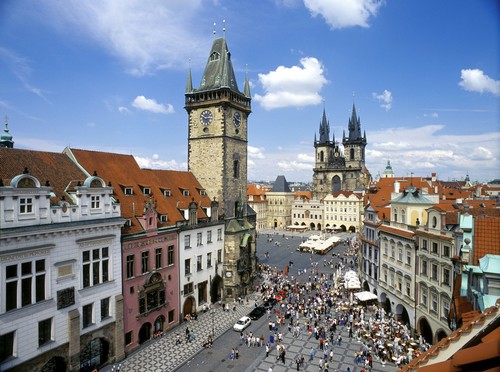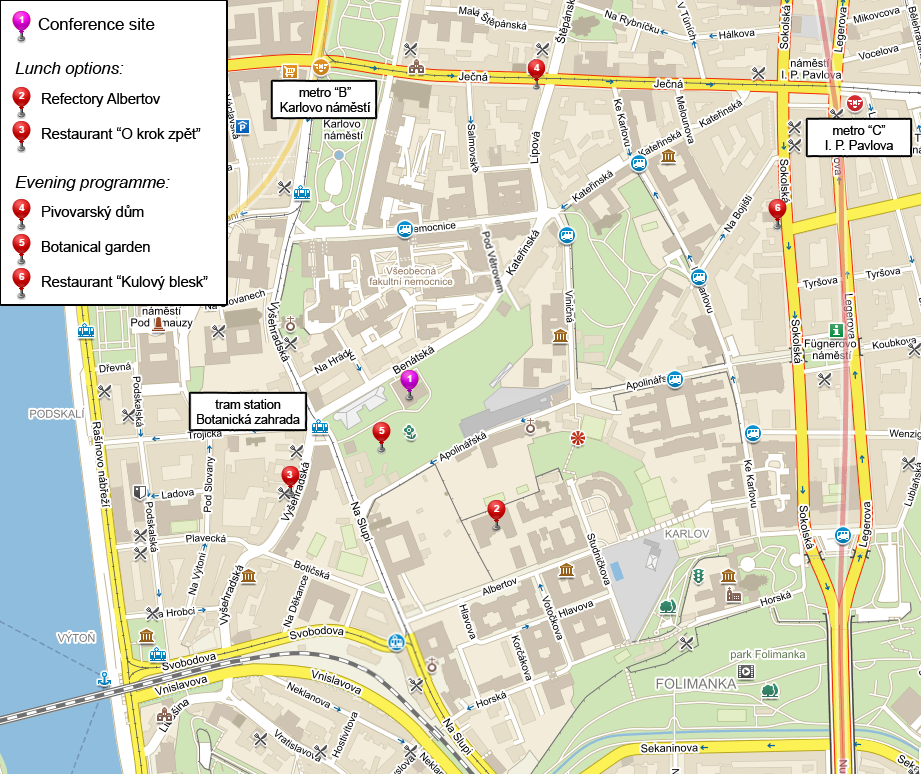Venue
| Prague, the Heart of Europe Looking at the map we can find that Prague really is a focal point; heart and centre of the continent. However, Prague is not only a geographical heart of Europe, but also a place where for centuries different nations were mixing and different cultures were merging, influencing each other. Those who walk through Prague walk through the history of Europe and its cultural streams. For more than one thousand and one hundred years visitors to Prague have been trying to give Prague a suitable name: stone Prague, golden Prague, magic Prague, hundred-spired Prague, Prague, mother of the all cities... Each of these highlight one of its many attractive features. Hundred-spired Prague – as this name suggests, Prague is the city of architectural treasures. It might be impossible to count all the large and small spires of Prague churches, palaces and houses. This city has been developing for more than one thousand years, in the course of time many memorable buildings have been built. In spite of often having been destroyed, Prague was able to keep its enormous legacy. It excels in Romanesque monuments; it is known as a world-renowned work of Gothic city planning. The re-catholicization of the country was accompanied by a remarkable development of the Baroque style. Hundreds of artists, mainly from Italy and Germany, gave Prague its Baroque appearance, which the city has been preserving since that time. The countenance of Prague reflects every cultural period and every artistic style. |
 |
 |
|
| Charles University in Prague Charles University, founded in 1348, is the oldest university in Central Europe and today belongs to the most eminent educational and scientific establishments in the Czech Republic, recognized in both the European and global contexts. It is an outstanding cultural institution as a result of its scientific and pedagogical achievements and its unique historical tradition. Charles University now contains 17 autonomous faculties ( 14 in Prague, 2 in Hradec Králové, and one in Plzeň), 3 collegiate institutes, 6 additional establishments for educational and scientific research, developmental activities, other creative activities and for information service, 5 university-wide facilities and the vice-chancellor's /rector's office which serves as an executive establishment for the Charles University management. |
 |
| Faculty of Science The Faculty of Science was established in 1920 as the fifth faculty of Charles University. It currently has 29 departments, 3 museums and a large Botanical Garden where the Study Department and some students' facilities are located. Nowadays the faculty is academically and organizationally divided into four sections: biological, geographical, geological and chemical. In addition to these sections the faculty has several specialists teaching and research centres, including interdisciplinary institutions such as the Institute for Environmental Studies. All parts of the faculty are active in both teaching and research. The main mission of the Faculty of Science is to create highly quantified experts in biology, chemistry, geography, geology and in other interdisciplinary fields. Its scientific and research effort aims to solve key problems concerned with the development of human society. Some of the priority long-term subjects are human health, the study of the function and prediction of the development of ecosystems and the biosphere, and the development of environmentally-friendly materials based on the utilization of renewable resources. |
 |
 |







